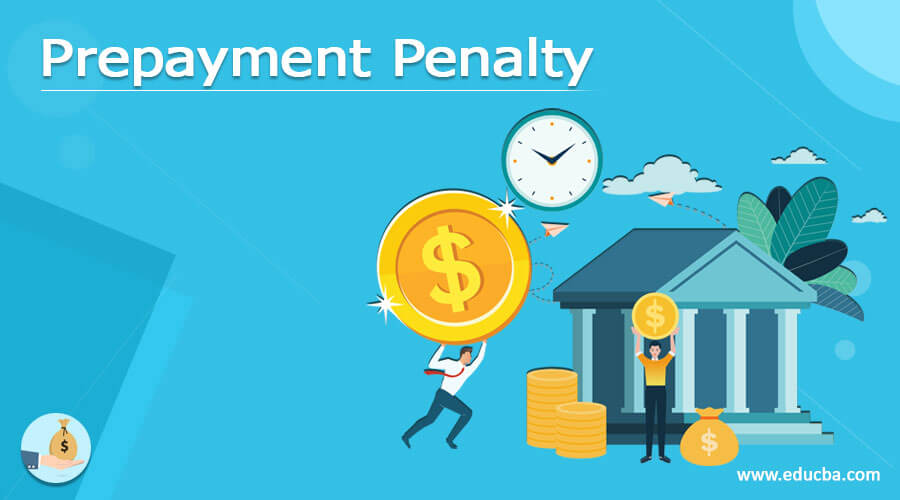Updated July 10, 2023

What is a Prepayment Penalty?
The term “prepayment penalty” refers to a lender’s fee if a borrower pays off the entire or part of the loan before its scheduled maturity. If a borrower is supposed to make a prepayment penalty, they must have agreed to this clause while closing the deal because it is not an inherent feature of any loan.
In addition, federal law has prohibited prepayment penalties for many loan types, such as FHA, USDA, and student loans.
How Does the Prepayment Penalty Work?
The prepayment penalty clause is written into a mortgage contract by a lender to cover the risk of early payment by the borrower, especially during difficult economic conditions or circumstances where a borrower is incentivized to refinance at a lower interest rate. Typically, these penalties kick in when a borrower pays off in full or a large portion of the balance in one go.
Therefore, a prepayment penalty clause safeguards a lender from refinancing risk. Also, it can be included in the loan agreement to recoup some profit when the lender losses future interest income due to prepayment by the borrower.
Examples of Prepayment Penalty
Let us look at an example to understand the concept of the prepayment penalty. Two years back, Mr. Tribbiani bought his first house worth $500,000. He took out a 10-year mortgage of $300,000 at 4.4% to afford this purchase, which has an in-built prepayment clause. The clause clearly states that if he makes an early payment of the loan before its 5th year, a prepayment penalty of 2% of the outstanding loan balance will be imposed on him.
Two years after taking the loan, he received an excellent refinancing offer at a lower interest rate of 3.75% as the market has fallen recently. So, he wants to take the offer and refinance the loan balance of $250,000 at this lower interest rate. The refinancing will save him close to $135 per month, but he will have to pay a prepayment penalty of $5,000 (or 2% of the loan balance) along with the loan repayment. Interestingly, savings can recover the prepayment penalty within three years. So, Mr. Tribbiani can close the deal and enjoy prepayment benefits.
Types of Prepayment Penalty
There are two broad categories of prepayment penalties:
- Hard Penalties: This type is imposed on a borrower if the prepayment is funded through selling a home or refinancing.
- Soft Penalties: This type is levied on a borrower if the prepayment is done using refinancing. It means that if the borrower prepays the mortgage after selling their home, it won’t result in a penalty.
How to Avoid Prepayment Penalty?
The following are some of the few things that borrowers can do to avoid prepayment penalties on loans:
- The first thing that borrowers should do is avoid alternative lenders. Typically, these are online-based non-banking lenders that specialize in providing subprime loans at a very fast pace.
- The borrowers should avoid frequent refinancing. Lenders usually don’t perceive it positively as they feel the borrower is more likely to refinance the loan as soon as rates fall.
- The borrowers can also try to find a co-signer or offer a higher down payment in exchange for a better loan term, including eliminating the prepayment fee.
- Lastly, the borrowers can wait for the prepayment penalties to phase out and then pay them off or refinance them. Otherwise, they can consider making the allowable extra payments and ensure that the early payoff fee is not triggered.
Benefits of Prepayment Penalty
Some of the major benefits are as follows:
- Lenders tend to safeguard themselves against refinancing risk. This is because it compensates them for losing future interest income as they have to let it go.
- It discourages the borrowers from foreclosing or refinancing their outstanding loans, which is good for the lenders.
Disadvantages of Prepayment Penalty
Some of the major disadvantages are as follows:
- In many cases, prepayment penalties are so huge that it eats away the benefits of refinancing the loan at lower interest rates. It is a major deterrent to the borrowers’ interest.
- Some borrowers may avoid lenders who inherently include the prepayment penalty clause in their loan agreement, which may not bode well for the concerned lenders.
Key Takeaways
Some of the key takeaways of the article are:
- A prepayment penalty is the lender levies fee when the borrowers pay off all or part of the loans before their scheduled maturity.
- It’s clause kicks in when a borrower pays off in full or a large portion of the loan balance in a single payment.
- Federal law prohibits prepayment penalties in many loans, such as FHA, USDA, and student loans.
- It protects the lenders against the risk of losing future interest income due to foreclosure or refinancing of loans by the borrowers.
Conclusion
The borrowers must read the loan terms very carefully to understand the circumstances under which they may have to pay the prepayment penalties. In some cases, the borrowers can ask the lenders for a quote for a similar loan without the prepayment penalty clause and then compare them to determine the total costs of the clause, which can be used in making an informed decision.
Recommended Articles
This is a guide to Prepayment Penalty. We also discuss the definition, working, examples, types, how to avoid it, and benefits and disadvantages. You may also have a look at the following articles to learn more –


